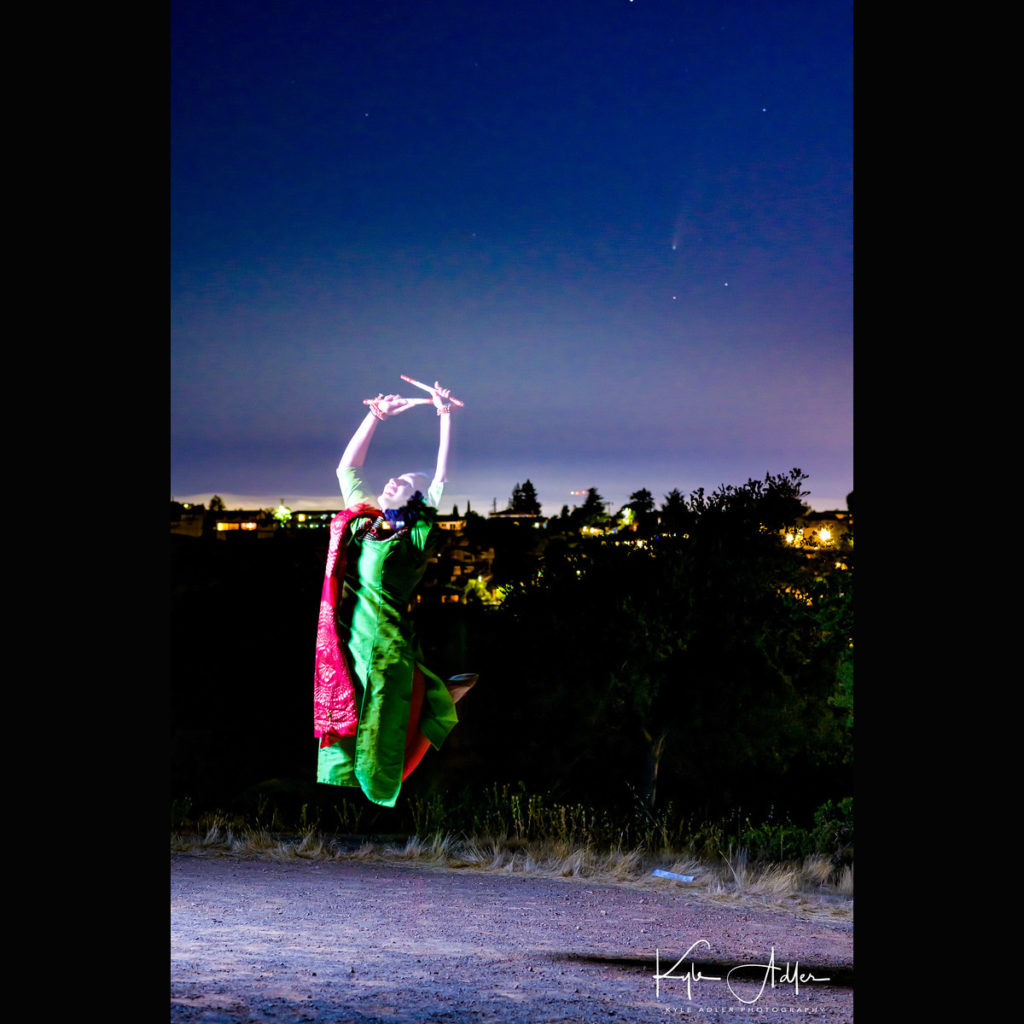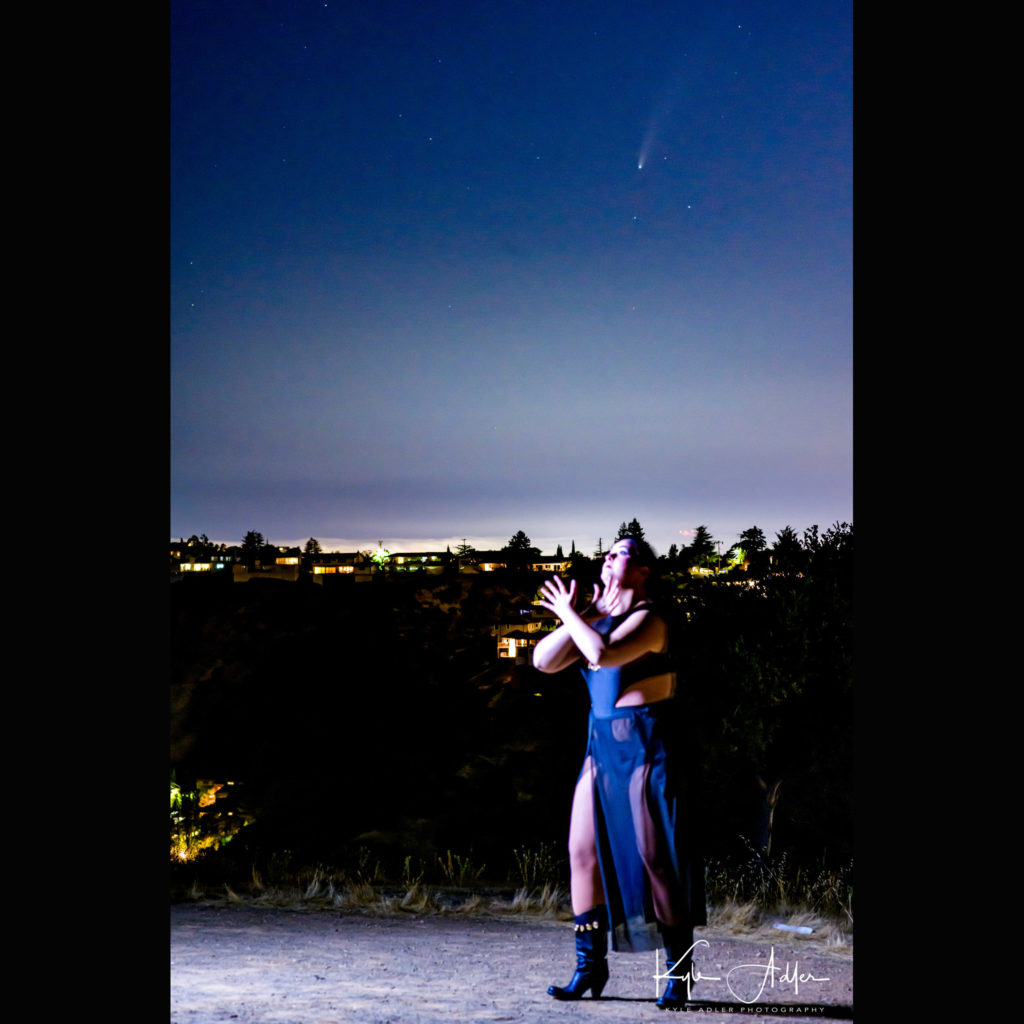Dear Readers,
I’m breaking radio silence to share a few images from my crazy experiment, “Dances with Comet”. Last Friday night, while observing Comet NEOWISE with my wife from a hilltop near our home, I realized I’d never seen a photo capturing a dancer (or any human being in motion) under a bright comet. So Saturday morning I put out a call for dancers, and quickly had several guinea pigs for my experiment. Saturday night I lugged my Profoto lights and modifiers through the forest and up the hill, accompanied by wonderful local dancers Esra and Nupur. We faced two immediate challenges: there were more than 20 bystanders watching the comet, and the low horizon was clouded out. Fortunately most of the observers left before the comet began to set into the haze, so I set up my gear and we started to shoot. We had about an hour before the cloud cover made NEOWISE appear too dim to see clearly in the images. Turns out our timing was good, because the next several nights have been overcast in the SF Bay Area, and now the comet is dimming as it heads away from the sun and past earth, not to return for 6800 years.
A huge thank-you to my two talented and brave dancers, contemporary dancer Esra and garba dancer Nupur. We had a great time and made some epic images that are unlike any others. Hope you enjoy the photos from this unique photoshoot.

Why was this experiment such a challenge technically? To expose a comet, a long exposure of at least 3-5 seconds is required, but to capture a dancer in motion requires an extremely fast shutter speed. To capture both the dancer and comet in the same exposure needs some careful planning. I used professional studio strobe lighting set to fire in “freeze mode” at about 1/8000 of a second to capture an instantaneous moment of the dancer’s movement, while leaving the shutter open for a full 3 seconds to properly expose the night sky. Because it was nearly pitch dark where the models were dancing, they were lit only by the momentary strobe lighting, which froze their motion. The remainder of the 3-second timed exposure allowed for the comet and stars to be properly exposed. To achieve point stars (i.e., without visible star trails caused by the rotation of the earth), I wanted to limit the exposure time to just three seconds, and I also needed to use an aperture of f/6.3 or smaller to have enough depth-of-field for both the dancer and the sky to be in focus. These limitations forced the usage of a high ISO of at least 3200.
Note that no digital trickery was used to make these images. Each photo was made in a single take (no composite images): I opened the shutter for 3 seconds to expose the night sky, first firing the studio strobes for about 1/8000 of a second to capture the dancer’s movement. In post-processing, I removed some noise and made a few adjustments to the tone curves and color temperature, but no pixels were shifted in the making of these photos.

Check out more photos from this project at https://www.kadlerphotography.com/Portrait-Photography/Dances-with-Comet/
Have you tried a crazy photographic experiment? How did it work out? Please share your experiences in the comments section.

